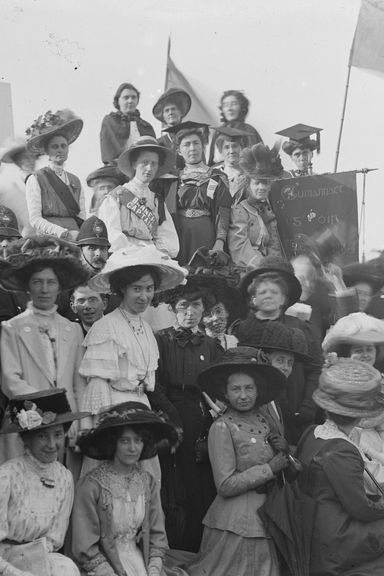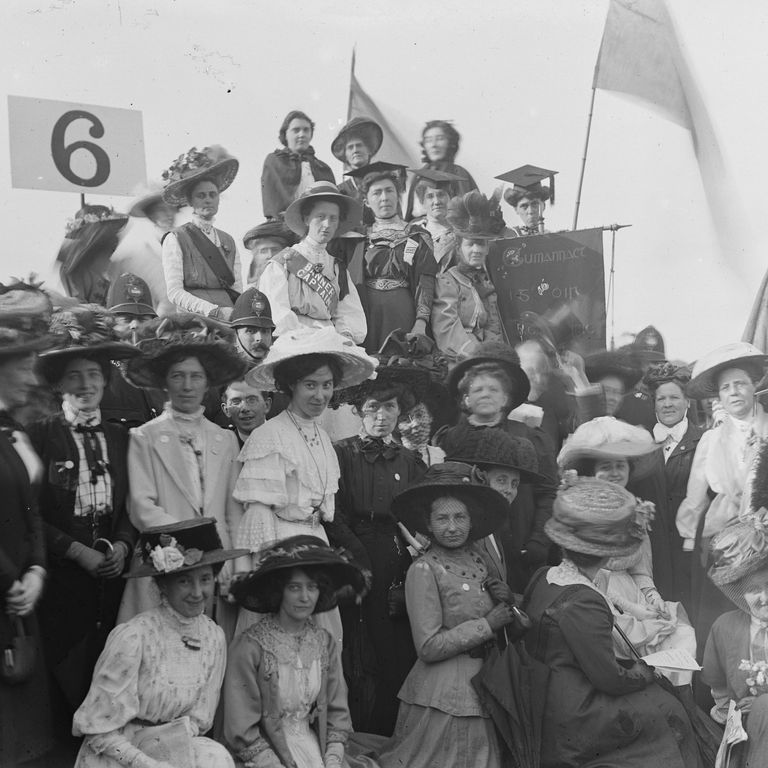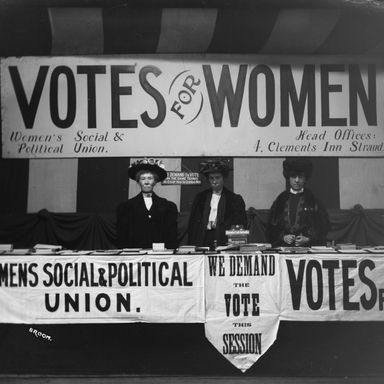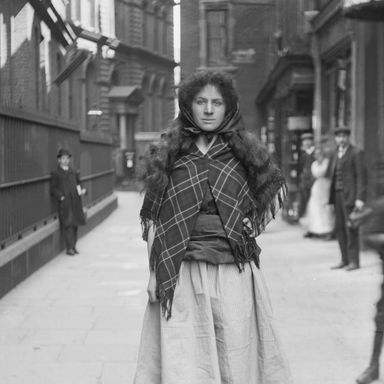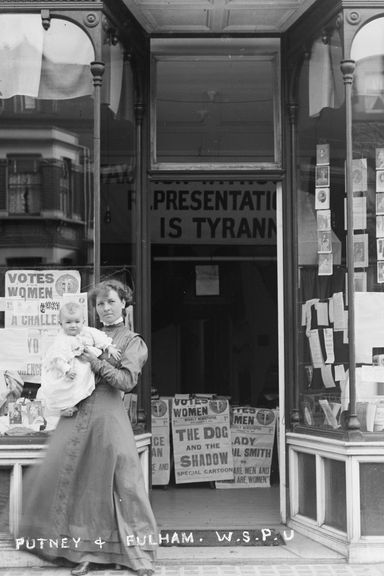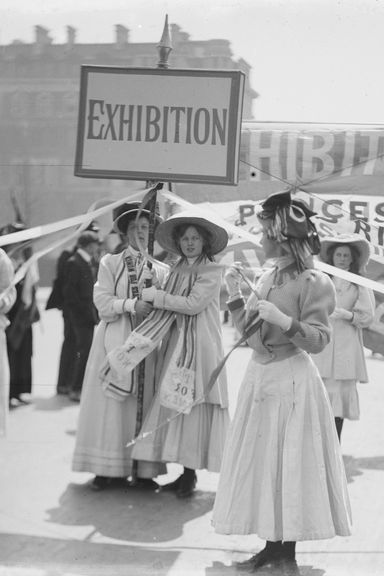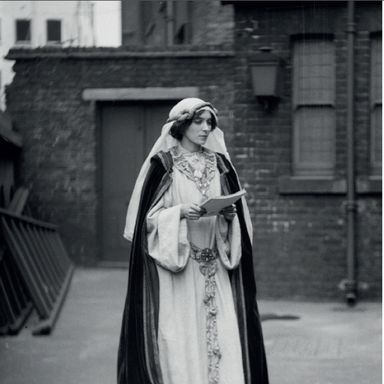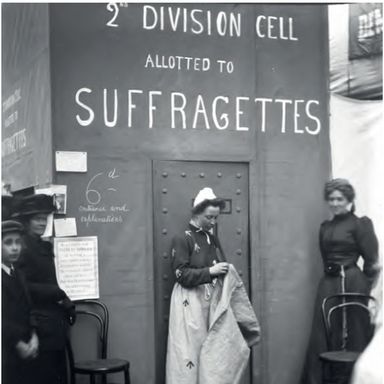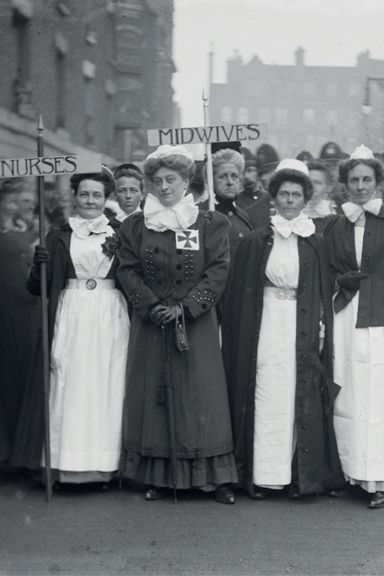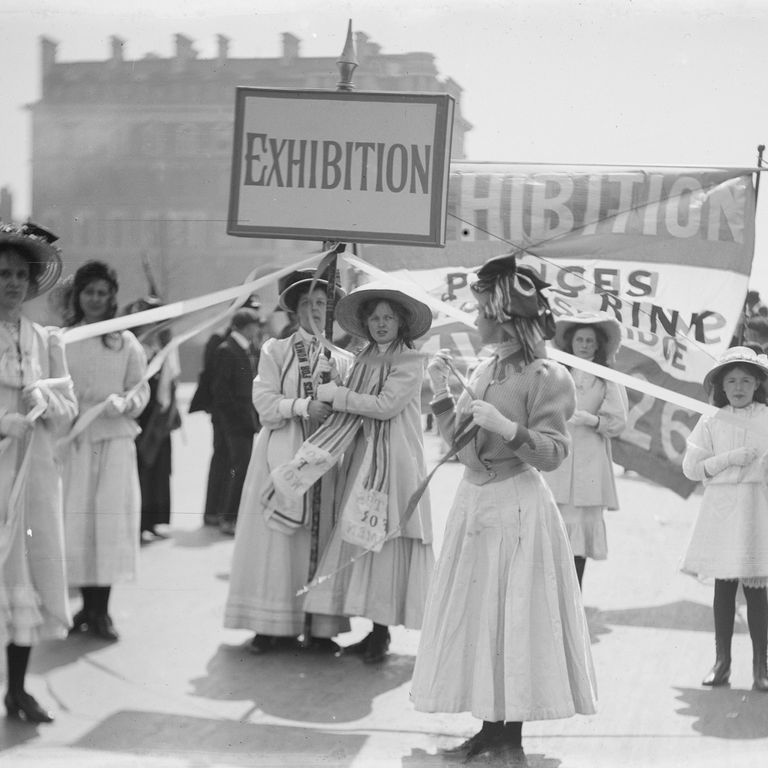Gallery: Early Photos of Suffragettes
When Christina Broom’s husband was gravely injured in a cricket accident, she turned her interest in photography into a business, becoming the U.K.’s first female press photographer. From the Edwardian period to the eve of the Second World War, Broom photographed sports, the royal family, soldiers in the First World War, and the women’s suffrage movement, caring for her ailing husband and dealing with her own crippling back pain all the while.
Broom stood under five feet tall and sometimes relied on her daughter Winnie to help her lug heavy equipment and push her wheelchair so she could photograph the barracks and the Royal Mews. Winnie was there the day Broom first photographed the women’s suffrage movement: June 21, 1908, or Women’s Sunday, when a quarter of a million people assembled in Hyde Park for the movement’s first “monster” meeting.
That day was Broom’s first foray into documenting the fight for women’s suffrage, and the day the suffragettes — members of the militant Women’s Social and Political Union — launched their purple, white, and green color scheme, symbolizing dignity, purity, and hope. Though Broom’s photos were black-and-white, they preserve the event’s excitement, which presaged the movement’s success in the following years.
Broom was careful not to join suffrage efforts so as to preserve her position as an official photographer and keep her favor with the king. It appears that her interest in documenting the campaign was more commercial than political — there were, after all, her husband’s medical bills to pay, and her family to support.
Still, she photographed the suffragettes with fervor, drawn in particularly by their elaborate costumes and fund-raising efforts. Though some of their documented actions may seem frivolous, they were undeniably effective. For example, the sweets stand Broom captured at the May 1909 Women’s Exhibition in Knightsbridge raised the movement the equivalent of over £10,000 from homemade chocolate and toffee alone. The costumes the suffragists occasionally donned worked to the same effect; dressed in feathered, flowery hats and veils and even medieval or fishing outfits, the protesters drew the media’s attention.
British women 30 and over won the right to vote in 1918 — rights for women over 21 came in 1928 — but for reasons unknown, Broom stopped documenting the movement in 1913. Regardless, her photos remain the best images of those who campaigned for the vote in London in the years leading up to the First World War. They can now be seen in Soldiers and Suffragettes: The Photography of Christina Broom, as well as at an exhibit on display at the Museum of London Docklands until November 1. Click through the slideshow to see Broom’s photos of the 20th-century trailblazers who won women the right to vote in the U.K.
